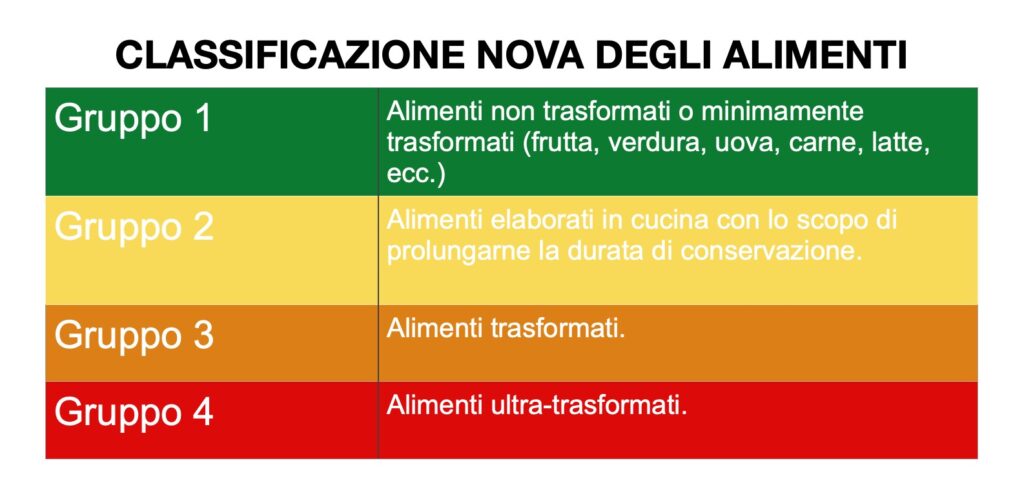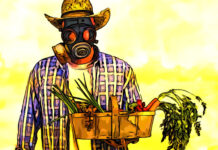A scientific study from the University of São Paulo (Cannella et al., 2023) identifies the excess of critical nutrients and/or the presence of ‘cosmetic’ additives as the guiding criteria for identifying ultra-processed foods, the consumption of which is associated with the highest risks of noncommunicable diseases and premature mortality (1,2).
Excess critical nutrients and ‘cosmetic’ additives
Researchers examined the nutritional table and label ingredient list of 9851 packaged food products, including beverages, in supermarkets in São Paulo and Salvador de Bahia, Brazil, to identify those characterized by:
– excess of critical nutrients, i.e., fats (including hydrogenated fats), sugars, and salt, according to parameters set by PAHO(Pan American Health Organization, or OPS, Organización Panamericana de la Salud), the WHO regional agency in the Americas,
– ‘Cosmetic’ additives, that is, molecules added not to ensure the healthiness of the product but to make it more ‘palatable’. Flavors, flavor enhancers, dyes, emulsifiers, emulsifying salts, sweeteners, thickeners, antifoaming agents, volumizing agents, carbonates, foaming agents, gelling agents, and coating agents.
Identikit of ultra-processed foods
The combined search for these two parameters has proven to be very effective in identifying ultra-processed foods and beverages. Which precisely are characterized by unbalanced nutritional profiles and/or the presence of ‘cosmetic’ additives, And it is thus possible, for example, to intercept products such as light (‘zero‘ or ‘sugar-free‘) drinks, laden with harmful sweeteners (aspartame in primis), which would escape research. (3)
The nearly 10 thousand products under study were then subjected to classification according to the NOVA system, depending on the degree of industrial processing. This system-developed right at the University of São Paulo (Brazil) by Carlos Monteiro’s team-distinguishes foods into four groups, from natural and unprocessed to ultra-processed foods, and which is adopted to develop dietary recommendations as part of national public health policies. (4)
The results
The analysis shows that 98.8 percent of ultra-processed foods (NOVA group 4) contain one or more cosmetic additives or have some critical nutrient in excess.
Some food categories are particularly foreign to a balanced diet:
1) critical nutrients. 97.1% of ultra-processed and 90.9% of processed foods have one or more excess nutrients of concern. Nutritional imbalance is most common in
– margarine, cakes, chocolate and ice cream (100%), (5)
– sweet cookies (99.7 percent) and cold cuts and sausages (99.5 percent),
– sugary drinks (87.4%), (6)
2) ‘Cosmetic’ additives. 82.1 percent of ultra-processed products contain at least one ‘cosmetic’ additive. They are almost always found in chocolates (98.3 percent of the sample), milk drinks (96 percent), cakes and sweet pies (95.5 percent), carbonated drinks (95.2 percent), and margarine (94.3 percent).
Among processed foods, processed culinary ingredients (animal fats), and unprocessed or minimally processed foods, the percentage is 3.7 percent, 0.4 percent, and 5.1 percent, respectively. Regarding the latter figure, it is worth noting that in the Brazilian sampling as much as 38.2 percent of ‘pasta’ (minimally processed food) contains ‘cosmetic’ additives. This result holds true for ready-made pastas (such as lasagna, cannelloni etc.) but evidently does not apply to Italian dry pasta (whose recipe strictly involves only durum wheat semolina and water),
3) flavorings and dyes. They were detected in 71.4 percent of ultra-processed foods, ranging from 95.2 percent of carbonated beverages to 22.6 percent of packaged bread.
The couple that pops
The co-presence of the two factors-excess nutrients and ‘cosmetic’ additives-is concerning:
– 100 percent of sweet and savory cookies, margarine, sweet cakes and pies, chocolate, dairy products, and ice cream,
– 99.7 percent of cold cuts and sausages,
– 99% carbonated beverages,
– 97.7 percent of ready meals, pizza, lasagna,
– 97.2% of the pastry,
– And 96.3% of other sugar-sweetened beverages.
Conclusions
‘According to our results., the strategy of identifying products with cosmetic additives combined with excessive amounts of critical nutrients seems to be useful in the proper classification of UPF (ultraprocessed, ed.).
‘If the BrazilianFoPNL (label on the front of the package, ed.) used a proper nutritional profile model and included information on cosmetic additives, it could help people make healthier food choices by identifying almost all UPFs,’ the researchers conclude.
In the Old Continent meanwhile, 9 countries voluntarily apply a highly effective label front nutrition information system, NutriScore, whose updated algorithm considers both nutrient profiles and certain ‘cosmetic’ additives such as synthetic sweeteners. (7)
Marta Strinati
On the cover Professor Carlos Monteiro, Faculdade de Saúde Pública, Universidade de São Paulo (NUPENS/USP), creator of the NOVA food classification system. Read more at https://www.fsp.usp.br/nupens/a-classificacao-nova/
Notes
(1) Canella, DS, Pereira Montera, Vd, Oliveira, N. et al. Food additives and OPS nutrient profile model as contributors to the identification of ultra-processed food products. Sci Rep 13 , 13698 (2023). https://doi. org/10.1038/s41598-023-40650-3
(2) Dario Dongo, Andrea Adelmo Della Penna. Ultraprocessed food, disease and premature mortality. Study in Italy. GIFT(Great Italian Food Trade). 11.12.21
(3) Marta Strinati. Aspartame and health risks, brief scientific review. GIFT(Great Italian Food Trade). 20.8.23
(4) Dario Dongo, Marta Strinati. NOVA classification, natural and ultra-processed foods. Friends and enemies of health. GIFT(Great Italian Food Trade) 16.9.20
(5) Marta Strinati. Ice cream, 19 bar types compared. GIFT(Great Italian Food Trade). 21.7.21
(6) Marta Strinati. Soft drinks and obesity in adolescents, the study in 107 countries. GIFT(Great Italian Food Trade). 31.7.23
(7) Dario Dongo. NutriScore, the tools for calculating nutritional profiles of foods and beverages. GIFT(Great Italian Food Trade). 17.6.23
Professional journalist since January 1995, he has worked for newspapers (Il Messaggero, Paese Sera, La Stampa) and periodicals (NumeroUno, Il Salvagente). She is the author of journalistic surveys on food, she has published the book "Reading labels to know what we eat".









